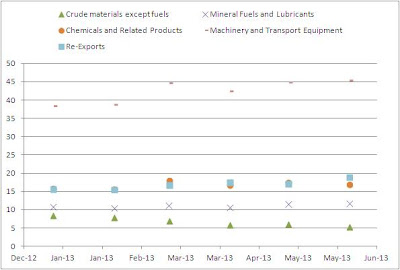Looks like the media is telling us that the GLD trust physical gold holdings are rising and giving a boost to the precious metals prices.
I don't believe it until I see it.
When I make the chart, I see that we are bottoming out (red chart), but by no means we are really seeing a pick up in GLD trust physical gold holdings yet. We will have to wait for a longer time frame to confirm this uptrend.
I need to admit that the red chart is bottoming out though. Maybe the selling of the GLD trust units has exhausted itself.
As for silver, we really start to see an uptrend here:
 |
| Chart 1: GLD Trust |














































